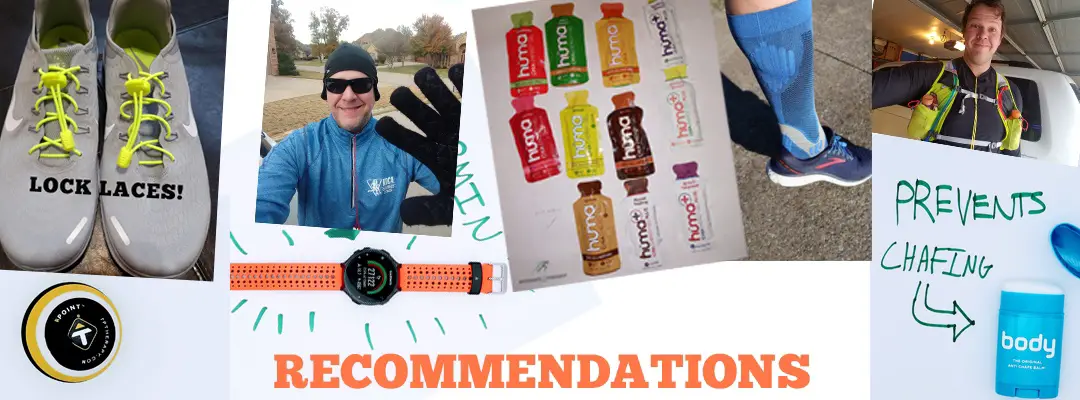Staying in shape physically and mentally is slowly becoming a necessity rather than a choice. Both men and women are focused on keeping in both good physical and mental shape.
As humans, we all have an inner want or desire to be physically attractive, have a nice physique, and be in overall good health. There are many ways by which one can move towards optimum health and walking is a great way to start.
How long does it take to walk 1 mile?
According to experts and based on empirical figures and data, average walkers should be able to cover 1 mile in 15 to 20 minutes when they are walking at a moderate to a brisk pace. These paces could vary greatly depending on the overall fitness level of the walker, the environment, the weather, and the terrain on which they walk.
Benefits of Walking
There are numerous proven benefits of walking and it is considered to be a proven way to burn extra calories and fat deposited in various parts of the body. Walking is known to improve circulation, by pushing the heart rate up. Elevated heart rates lead to increased pumping of oxygen and nutrient-rich blood to various parts of the body. People who walk a mile a day can bring down the risk of stroke by 20% and by 40% when they get into the habit of brisk walking.
Walking also could help to strengthen bones and joints. People who practice regular and brisk walking could see a 40% reduction in the risk of fractures and other bone disorders. Additionally, regular walking also could help in lightening the mood, help in weight reduction, and also strengthen muscles of the leg and also other parts of the body.
Other proven benefits include improvement in-breath and oxygen flow from the lungs, improved quality of sleep, and also could help in slowing down mental decline.
Walking is one of the simplest and easiest workouts that one can think of. It does not require regular visits to the gym or spending big money on the various physical fitness equipment. All it requires is a positive mindset and the willingness to spend the required time for walking at a place and time of your choice.
How Much Walking Should I Do Per Week?
The U.S. Department of Health & Human Services Recommends the following physical guidelines for staying healthy:
Children 6 to 17 years of age
- 60 minutes (1 hour) or more of moderate-to-vigorous physical activity daily.
- Physical activities should consist of aerobic, muscle-strengthening, and bone-strengthening
Adults
- 150 minutes (2 hours 30 minutes) to 300 minutes (5 hours) moderate-intensity activities or 75 minutes (1 hour 15 minutes) to 150 minutes (2 hours 30 minutes) of vigours-intensity aerobic physical activity
- Strength train all muscles groups at least two times a week
- Physical aerobic activity should be spread out through the week
- “Additional health benefits are gained by engaging in physical activity beyond
the equivalent of 300 minutes (5 hours) of moderate-intensity physical activity
a week”
Older Adults
- Should aim for at least 150 minutes of moderate-intensity physical activities
- Older adults need to take into consideration their physical fitness level and any other chronic issues that could be exacerbated by physical activity.
Walking Example #1 of a physically fit adult:
Since an adult needs between 150 minutes to 300 minutes of exercise a week we could derive this weekly exercise schedule for an adult:
- Monday: Walk 3 miles a day (3 miles x 20 minutes = 60 minutes)
- Tuesday: Strength Train (30 minutes)
- Wednesday: Walk 3 miles a day (3 miles x 20 minutes = 60 minutes)
- Thursday: Strength Train (30 minutes)
- Friday: Walk 3 miles a day (3 miles x 20 minutes = 60 minutes)
- Saturday: Rest
- Sunday: Rest
In the above scenario #1, you would have exercised a total of 240 minutes.
Walking Example #2 of a physically fit adult (Time-Crunched):
Since an adult needs between 150 minutes to 300 minutes of exercise a week we could derive this weekly exercise schedule for an adult:
- Monday: Walk 3 miles a day (1.5 miles x 20 minutes = 30 minutes)
- Tuesday: Strength Train (30 minutes)
- Wednesday: Walk 3 miles a day (1.5 miles x 20 minutes = 30 minutes)
- Thursday: Strength Train (30 minutes)
- Friday: Walk 3 miles a day (1.5 miles x 20 minutes = 30 minutes)
- Saturday: Rest
- Sunday: Rest
In the above scenario #2, the adult would have exercised a total of 150 minutes (the bare minimum recommendation).

Walking 1 mile Is a common physical activity worth at least 20 minutes of exercise
You can include walking as part of a daily fitness regimen. You also could walk as a part of a charity event or a competition. Whatever the occasion, having a general idea of how long it takes to walk a mile can set your mind at ease. Not everyone will be able to walk a mile in 20 minutes. It’s important to know your individual limits and not over-exert your body unless you are experienced and in good physical shape.
By first mastering the art of walking a mile within 15 to 20 minutes, you can lay the foundation for covering longer distances. Perhaps you can slowly start adding additional miles each week so you could scale up to 3 miles, 5 miles, 10 miles, and so on.
Famous distance includes:
- 5K
- 10K
- half-marathons (13.1 miles),
- marathon (26.2 miles)
- ultramarathon (50 Kilometers + )
Mastering The Art of Walking At Different Paces
As a walker when you are walking for fitness or for other purposes, it is important for you to get your pace right. Some people’s main objective for walking is to keep their bodies fit and also burn those extra calories.
Make sure you use an app or a simple log sheet to track your miles walked. This will help you stay on target with your overall fitness and wellness objectives. There cannot be a straight-jacketed rule for various pace objectives. The general rule is to try to walk at a brisk pace, however, keep in mind what your comfort level is, and don’t cross the limit in your quest to increase your speed or walking distance. Remember, if you get injured you set back all of your physical fitness goals and objectives.
Related: Walking To Lose Weight- Ultimate Guide
Easy, Moderate, & Fast Walking Paces
If you’re relatively new to walking longer distances you should take it easy at first and start with a leisurely approach. It will help condition your body to walk and you will not run out of breath as quickly. Easy walking is more about strolling at a leisurely and easy pace. As a beginner, you should aim to cover the first mile in 20 plus minutes. Though it may look a bit slow when compared to those who have been walking for some time, you will give your body enough time to adjust to the newfound habit. Don’t compare yourself to others when you’re a new walker (For other tips check out: 6 Things Your Running Coach Wish You Would Stop Doing)
Moderate walking should take you to the next level of expertise when mastering the 1 mile. You should switch gears and move to this level once you are comfortable with the easy level of walking. When you are further along, you should be able to comfortably complete 1 mile in around 15 minutes.
Fast walking is the final step toward your one-mile walking objective. A fast mile-walker should be able to complete the mile in around 11 minutes flat. At this speed, your heart will pump faster and your body also sweats even when you are in a relatively cold climate. It is a great aerobic workout and it also gives you the desired workout for your leg and core muscles. In fact, walking like cycling or swimming is considered to be a complete exercise because it works with almost all the core muscles.
For a detailed post of the dos and don’ts of walking in cold weather, check out:
How To Run In Cold Weather – Beginner’s Guide
What do I do If I have trouble walking?
Treadmills
If you’re having trouble walking you can always use a treadmill for support. A treadmill normally has handrails that run along the body that you can easily grip onto while walking.
Trekking Poles (Walking Poles)
Trekking poles are primarily used for hikers and runners in the mountains where the terrain can become quite technical. That doesn’t mean that you can’t use them to walk in the park or on your street for support.
For great trekking poles and treadmills check out my recommendations page.
Walking In A Group Helps
Positive peer pressure is important in all spheres of life and it also could help a walker push onwards to their goals. When you are walking in a group, you will be forced to keep pace with them. It will help you to push yourself more without overstretching or overexerting yourself. In fact, when you regularly walk the mile in a group, over a period of time, you may even be able to break the 13-minute barrier of one mile. This is the norm for those who are experienced walkers. Who knows, if you persist and improve upon it, maybe you’ll get competitive and decrease your walking pace mile.
Related: What Happens To Your Body When You Walk More?
Crossroads of the 13-minute mile
The magic of the 13-minute mile comes at a crossroads. The 13-minute mile is where the slow joggers meet the fast-paced walkers at 13 minutes per mile. The 13-minute mile is a good goal to aim for because once you are walking at this speed you can start to slowly transition into walk/run intervals if you have the desire to run one day. Also, if you transition from walking to running you will experience an exponential health benefit to your aerobic base. Check out this detailed post on how to aim for the 13-minute mile and all its alluring benefits.
Measure Your Walking Speed
There are many ways for you to measure your speed. Today you have a number of phone apps and also GPS watches that could accurately measure your speed of walking. You also could choose some low-tech alternatives including stopwatches.
Related: 10 Ways To Increase Your Walking Speed
Walking a half marathon
Do you have a burning desire to walk a half marathon? More and more walkers are turning toward bigger and more ambitious goals. Why not join them? Check out my extensive detailed post on – can you walk a half marathon in 4 hours (multiple pacing tables included in the post).
Also, check out this detailed post about why you should walk your next half marathon instead of running it.
Are you wanting to increase your daily steps?
I have put together a great post on how to get more daily steps in. Check out the post here: How To Walk 10,000 Steps A Day.
Are you ready to try to run a mile?
Running a full mile without stopping is a huge milestone for a person to achieve before fully transitioning to running races instead of walking them. If you want an absolutely free solution on how to walk 1 mile when your out of shape check out this post: How To Run 1 Mile When Your Out Of Shape! (Don’t worry you still get to walk while training yourself to run 1 mile)
| Help support me and subscribe to my YouTube channel. YouTube video - 30 ways to make your runs less painful! Coach Scott's Credentials:
|
To sign up for a FREE half marathon training schedule, log sheet, and pace predictor CLICK HERE.

Recommended gear for runners
Connect with me:
| facebook.com/BeginnerToFinisher/ |
